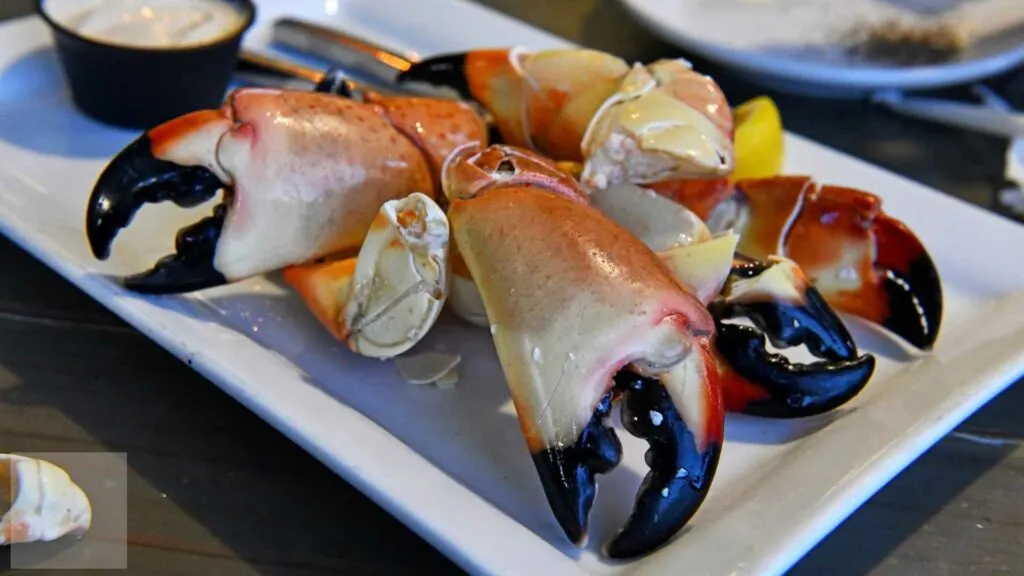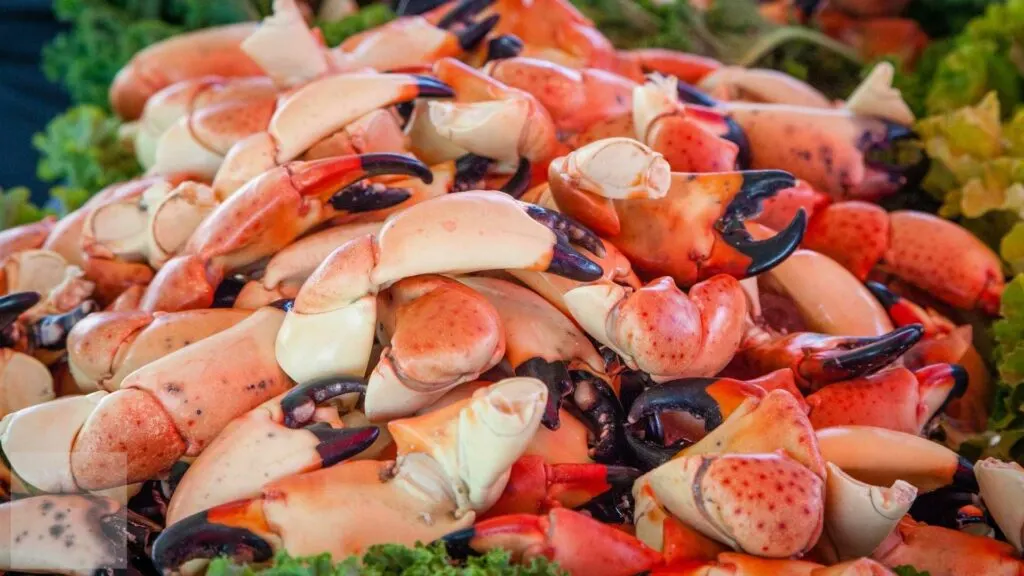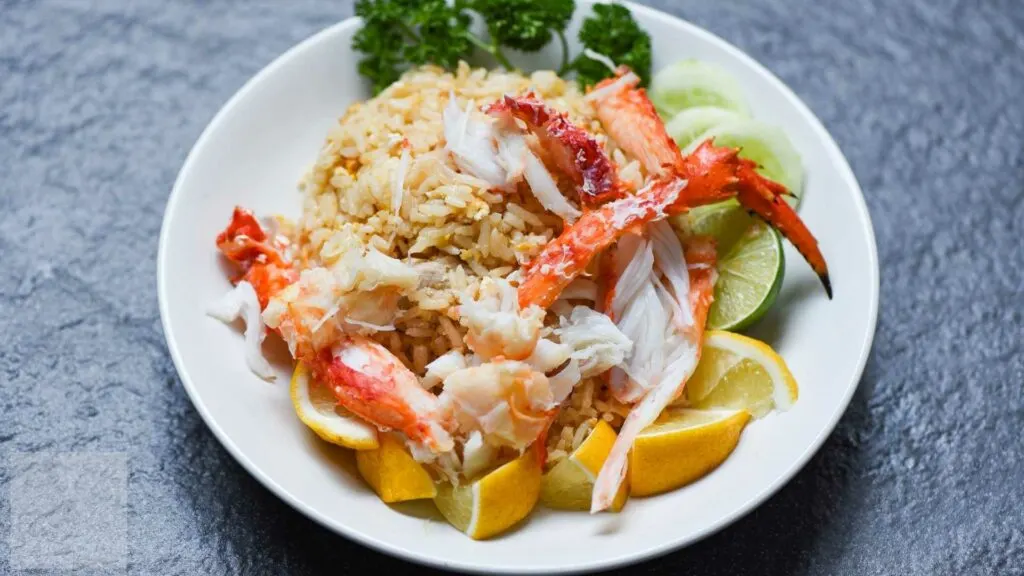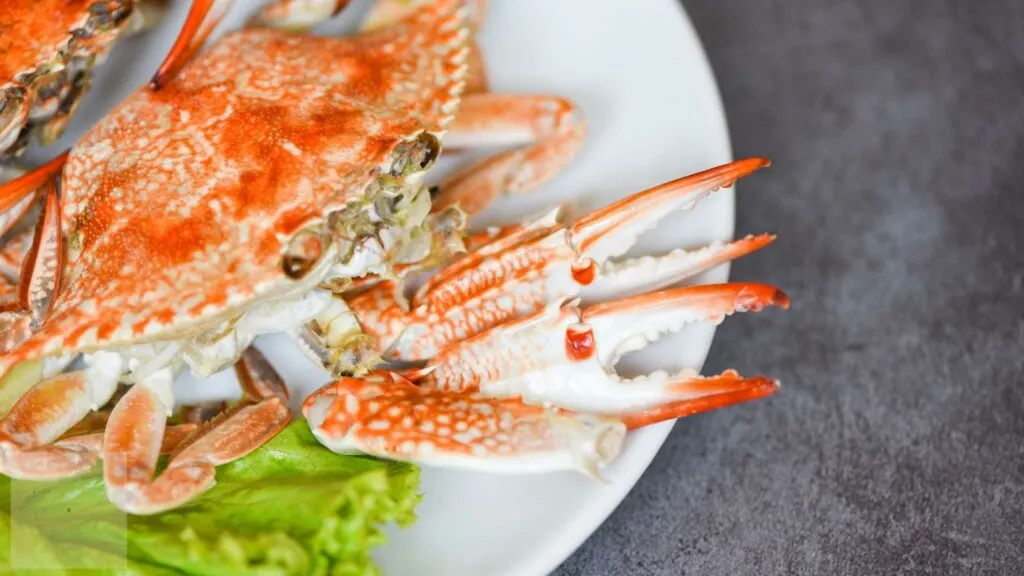Stone crabs have relatively smaller bodies than regular crabs. As such, their bodies are rarely eaten.
However, stone crab claws, also known as chelae, are a delicacy in many cuisines.
Here’s a guide to the benefits of stone crab claws and how to prepare them.

What Are Stone Crabs?
The Florida stone crab (Menippe mercenaria), commonly known simply as the stone crab, is a crab species that primarily inhabits the western North Atlantic. Its native range spans from Connecticut to Colombia, including Texas, the United States East Coast, the Gulf of Mexico, and the Caribbean.
Stone crabs differ from regular crabs primarily in their size and flavor.
The Florida stone crab has a large body relative to its claws. Therefore, the crab is typically harvested for its chelae. As for the taste, stone crabs are sweet and succulent, while regular rock crabs tend to be tender.
How Might Stone Crab Claws Impact Your Health?
The Florida stone crab claws contain powerful nutrients, including vitamin B12, iron, and folate. These chelae also abound in niacin, zinc, and selenium.
Each of these nutrients can benefit your health and wellness in various ways.
For instance, vitamin B12 is involved in DNA synthesis and repair. The vitamin may also improve the health of your blood and nerve cells.
Zinc and selenium are potent antioxidants, while niacin-rich foods can lower blood pressure and fat levels.

How to Prepare Stone Crabs
Despite their sweetness and nutritional benefits, stone crabs can be challenging to prepare. That’s primarily due to their harder shells.
Note that you cannot remove a stone crab’s shell during cooking. The crab is traditionally served with its shell intact.
Stone crab claws are even more difficult to prepare due to their toughness. Most stone crab chelae can achieve a remarkable strength of 43,200 pressure per square inch (PSI). That’s sufficient force to crash the shells of regular crabs and other mollusks.
But with constant practice and reliance on handy online tutorials, it’s totally possible to prepare stone crab claws. Here’s how;
1. Boil your stone crab claws
While you can wait until the next day to prepare normal crabs after catching them, stone crabs are best cooked immediately. The longer the chelae remain uncooked, the tougher they become. That’s especially true if you keep the claws out of water and in direct contact with air or heat agents.
Ensure the claws are visibly fresh if it’s a store-bought stone crab. Look out for any suspicious signs of decay, such as pale coloration, sliminess, and foul odor. Fresh stone crab claws are safe for consumption and provide a richer flavor than chelae, which has been on the shelf for months.
Add water to a saucepan to boil stone crab claws and place the pan over a heat source. The amount of water can range from half a cup to three cups, depending on the number of stone crab claws you intend to prepare.
Boil the chelae for about eight minutes. A longer duration works fine for larger stone crab claws.
2. Season and spice as required
Stone crabs are highly prized for their sweet and flavorful taste. That said, you can still enhance their flavor as required.
Add a pinch of salt to boiling stone crab claws to taste, then follow with your preferred spices. Natural herbs like ginger and cinnamon can give your stone crab claws finger-licking goodness.
Note: You may skip this process if you plan to serve stone crab claws with seasoned dishes.

3. Stop boiling
Once your stone crab claws have boiled for the desired duration, reduce the heat source.
Add cold water to a saucepan and dip the boiled chelae into the cold water. This immediately stops the boiling process.
4. Let the claws cool
Stone crab claws are best served cold. So, allow the boiled chelae to cool completely.
It’s best to cool your Florida stone crab claws naturally. Do not place the chelae in a refrigerator or freezer.
5. Peel off the meat and enjoy!
Boiling stone crab claws softens the shell considerably but not soft enough to crush with your fingers. So, once the claws have cooled down, hold them in one hand and use a spoon or wooden mallet to strike their shells about thrice.
Remember to apply a measured amount of force, but hit the claws gently. Using excessive force might cause fragments of the chelae to cling to the meat, adversely impacting your dining experience.
After hitting one side, flip the stone crab claws over and strike the other side three times.
Check that the outer shell of your stone crab chelae pulls off easily. If yes, separate the shell from the meat by peeling it away using your fingers.
Now, hold your stone crab claw by the pincer, remove the meat, and dig in.
Like most crustaceans, you can consume stone crabs as a standalone food or alongside other dishes. For a mouthwatering taste, consider serving stone crab claws with melted butter or warm vegetables.

How to Prepare Stone Crab Claws: A Step-by-Step Guide
Stone crab claws are loaded with powerful nutrients, including some of the rarest vitamins and minerals. Consuming these chelae regularly can guard against nutritional deficiencies while optimizing your overall health and development. As with most delicacies, the secret to enjoying stone crab claws is to follow a proper recipe. Hopefully, you can bookmark this post for reference the next time stone crab claws come up on your household menu.
Bon appetit!

Jessi is the creative mind behind The Coffee Mom, a popular blog that combines parenting advice, travel tips, and a love for all things Disney. As a trusted Disney influencer and passionate storyteller, Jessi’s authentic insights and relatable content resonate with readers worldwide.
